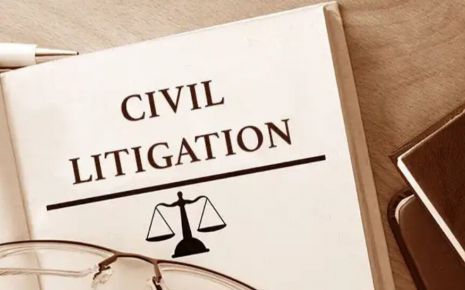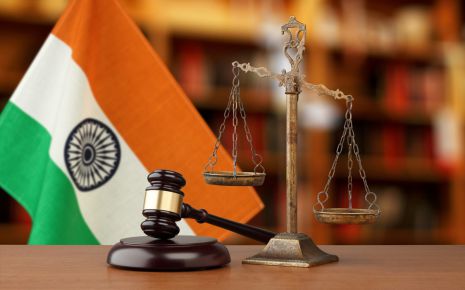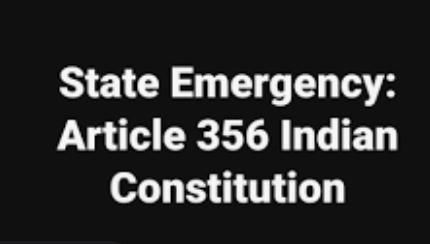Tort Liability of the State: Understanding Vicarious Responsibility
This essay addresses vicarious liability or the connection between a master and
a servant. A circumstance where someone is held accountable for the deeds or
omissions of another person is known as vicarious liability. It can be
challenging to determine whether the state or government should be held
accountable for the wrongdoings of its employees, especially in emerging nations
where the scope of government activity is expanding at an exponential rate.
The principles of public law inherited from British common law and the requirements of the constitution regulate the government's tort liability. One person's liability for another person's actions is referred to as "vicarious liability."
In a situation involving vicarious liability, both parties are accountable for the actions of another. In an instance of vicarious liability, this means that both the person ordering the conduct and the person actually performing it are accountable. Employers are vicariously accountable for the torts committed by their employees while they are on the job. According to Article 300 of the Constitution, the position of state liability is as follows: The Indian government may sue or be sued in the name of the union of India and the government of the state, according to clause (1) of article 300 of the constitution.[1]
Introduction
Vicarious liability refers to situations in which one person is held responsible for the actions of another.
Tort law is regarded as an exception to the general rule that a person is exclusively accountable for his own actions.
It is founded on the tenet of qui facit per se per alium facit per se, which literally translates to "He who performs an act through another is judged in law to perform it himself."
Therefore, in a case of vicarious liability, both the party ordering the conduct and the party performing it are accountable.[2]
As a result, employers are held accountable for the crimes committed by their workers while they were working for them.
The most typical examples of such liability are:
This maxim states that if the master must engage employees to carry out his tasks due to the nature of the situation, he is equally liable for their actions as he is for his own.
Every act that a servant performs while doing his duties is thought to have been ordered by his master, and as a result, it has the same effect as if it had been the master's own act. If A is performing for X. It will be assumed that X is carrying out the action independently, making him responsible for A's actions as well.
It is a cornerstone of the law of agency. This maxim is frequently used when addressing an employer's responsibility for an employee's actions.
The master may be held vicariously accountable for the wrongdoing of the servant, therefore the plaintiff may choose to file a claim against either one or both of them.
He makes his own decisions and is his own master. The definition of an independent contractor is someone who "undertakes to create a particular outcome, but in the actual conduct of the work, he is not under the order or control of the person for whom he does it, and may use his own discretion in things not specified beforehand."[5]
The following two conditions must be met for the master to become liable:
For illustration, my chauffeur is my servant. I will be held accountable if he carelessly knocks X to the ground. However, if he hires a taxi to take him to the train station and the driver strikes X carelessly, I will not be held responsible for X because the driver is not my employee but only an independent contractor.
Only the taxi driver will be responsible for that.
The following groups best describe the principle's principal exceptions:
Cases involving extra-dangerous acts, number six.[8]
The State's responsibilities now extend beyond maintaining law and order, administering justice, and defending the nation to include commercial and economic operations, the provision of a variety of public services, etc.
The State can have an impact on people's lives via its dealings with citizens, occasionally causing harm to their lives and property through the misconduct of its employees.
According to the principles of equality and justice, the state should be held accountable for any harm done to citizens as a result of improper actions taken by its workers or agents while performing their duties.
Civil culpability under tort law, which compensates the citizen for the violation of his or her private rights, is frequently the solution to such wrongs.
Such a remedy would be distributive justice in that the state bears the risk of damaging the individual by its activities, even though it may not be at fault, and corrective justice in that it demands the state whose actions have interfered with the rights of a citizen to make it right.[9]
However, the law governing state liability for torts in India does not adhere to these standards, which prevents it from giving citizens the information they need and, in some situations, causes injustice by depriving them of a remedy.
The cornerstone of India's current legal system is a clause that was created during the country's colonial era but has since lost much of its significance.
Furthermore, because of the divergent views expressed in the provision, court interpretations of it have produced inconsistent results.[10]
Actions may be taken by or against the Government of India or the Government of a State, respectively, in the name of the Union of India or the State, according to A. 300(1). The Government Government of India and the Government Government of every state may be held legally liable under this law. The scope of such obligation is further defined by A. 300(1), which holds the Government of India and the governments of all states accountable to the same degree as the Dominion of India and the corresponding provinces or Indian states.
The definition of responsibility in A. 300(1) also makes it subject to any laws passed by the state legislatures or the Indian Parliament.
To estimate the extent of the Dominion of India's liabilities as well as that of the relevant provinces, reference must be made to the Government of India Act, 1935.[11]
End-Notes:
The principles of public law inherited from British common law and the requirements of the constitution regulate the government's tort liability. One person's liability for another person's actions is referred to as "vicarious liability."
In a situation involving vicarious liability, both parties are accountable for the actions of another. In an instance of vicarious liability, this means that both the person ordering the conduct and the person actually performing it are accountable. Employers are vicariously accountable for the torts committed by their employees while they are on the job. According to Article 300 of the Constitution, the position of state liability is as follows: The Indian government may sue or be sued in the name of the union of India and the government of the state, according to clause (1) of article 300 of the constitution.[1]
Introduction
Vicarious liability refers to situations in which one person is held responsible for the actions of another.
Tort law is regarded as an exception to the general rule that a person is exclusively accountable for his own actions.
It is founded on the tenet of qui facit per se per alium facit per se, which literally translates to "He who performs an act through another is judged in law to perform it himself."
Therefore, in a case of vicarious liability, both the party ordering the conduct and the party performing it are accountable.[2]
As a result, employers are held accountable for the crimes committed by their workers while they were working for them.
The most typical examples of such liability are:
- The principal's liability for the agent's tort;
- Partners' liability for each other's tort; and
- The master's liability for the servant's fault.
Essentials For Vicarious Liability
Relationship
- The wrongdoer and the person who gave the order should have some kind of relationship.
- Master-servant, principal-agent, independent contractors, and other types of relationships are all possible.
Ratification
- According to tort law, there are three ways that a person can be held accountable for the wrongdoings of others:
- By condoning or approving the specific act with knowledge that it was tortious.
- By being in a relationship with the other party that makes them accountable for the wrongs they commit.
- By aiding and abetting the wrongdoing of others. Any two or more people can be in a relationship during ratification; a master-servant relationship is not required.
Course of Employment
An act is deemed to be performed in the course of employment if it is either (a) an unlawful act authorised by the master, such as the delegation of work by an authorised person to an unauthorised person, or (b) an unlawful & unauthorised mode of performing an act authorised by the master, such as when the act is performed by the servant in an unauthorised manner.[3]Reasons For Vicarious Liability
Vicarious obligation has been imposed for a number of reasons, including the following:- The 'deepest pockets' belong to the master. There have been instances where the evolution of legal concepts has been unintentionally influenced by a defendant's wealth or the fact that he has access to resources through insurance.
- Vicarious liability gives an employer a financial incentive to motivate his staff to prioritise others' safety, which promotes accident prevention.
- Since the employer benefits from the actions of his employees, he should also be responsible for any losses those actions may result in.
Qui Facit Per Alium Facit Perse
A Latin legal expression that means "He who acts through another accomplishes the deed himself" is qui facit per alium facit per se.This maxim states that if the master must engage employees to carry out his tasks due to the nature of the situation, he is equally liable for their actions as he is for his own.
Every act that a servant performs while doing his duties is thought to have been ordered by his master, and as a result, it has the same effect as if it had been the master's own act. If A is performing for X. It will be assumed that X is carrying out the action independently, making him responsible for A's actions as well.
It is a cornerstone of the law of agency. This maxim is frequently used when addressing an employer's responsibility for an employee's actions.
The master may be held vicariously accountable for the wrongdoing of the servant, therefore the plaintiff may choose to file a claim against either one or both of them.
- They share joint and many responsibility.
Even though the servant went against the clear instructions and did not behave in his master's best interest, responsibility still exists.
A servant is someone who is hired by another to perform tasks under the supervision and direction of his master.
- In general, a master is responsible for the wrongdoing of his servant, but not of an independent contractor.
He makes his own decisions and is his own master. The definition of an independent contractor is someone who "undertakes to create a particular outcome, but in the actual conduct of the work, he is not under the order or control of the person for whom he does it, and may use his own discretion in things not specified beforehand."[5]
Liability Of The Principal For The Act Of His Agent
When a principal gives his agent permission to carry out any action, the principal is responsible for that action as long as the action was carried out in the course of the agent's duties.Partner's Liability
Other partners of a partnership are equally liable as the at-fault partner for the torts committed by that partner in the ordinary course of that partnership's business. As a result, there will be joint and multiple liability.Master's Responsibility For The Actions Of His Servant
According to the "respondent superior" principle, which simply means "let the principal be liable," the master is responsible for the actions of his servant.The following two conditions must be met for the master to become liable:
- The servant did the wrong.
- The wrongdoing was done by the servant while performing his duties.
For illustration, my chauffeur is my servant. I will be held accountable if he carelessly knocks X to the ground. However, if he hires a taxi to take him to the train station and the driver strikes X carelessly, I will not be held responsible for X because the driver is not my employee but only an independent contractor.
Only the taxi driver will be responsible for that.
Servant And Independent Contractors
- While both a servant and an independent contractor are hired to perform
tasks for their employer, their legal status differs from one another.
An independent contractor is hired under a contract for services, whereas a servant is hired under a contract of services.
Compared to his liability for wrongs committed by an independent contractor, the employer's liability for wrongs committed by his servant is more severe.
- If a servant commits a wrongdoing while performing his duties, the master is responsible. Of course, the servant is likewise accountable. The wrongdoing of the servant is seen as the master's fault as well.
Liability For Independent Contractors
If a person hires an independent contractor to complete work on his or her behalf, that person is not typically liable for any torts committed by the contractor while carrying out the task.The following groups best describe the principle's principal exceptions:
- Situations in which the employer is prohibited from delegating by a statutory obligation.
- Cases in which fire has escaped.
- Cases involving the escape of chemicals brought onto the property, such as explosives, that are likely to do harm if they do; culpability will attach in accordance with the Rylands v. Fletcher rule.
- Cases involving highway operations that could put people using the route in danger.
Cases involving extra-dangerous acts, number six.[8]
State Liability
The idea of the State has changed significantly from one of political organisation to one of an organisation that closely engages with its citizens in a variety of domains.The State's responsibilities now extend beyond maintaining law and order, administering justice, and defending the nation to include commercial and economic operations, the provision of a variety of public services, etc.
The State can have an impact on people's lives via its dealings with citizens, occasionally causing harm to their lives and property through the misconduct of its employees.
According to the principles of equality and justice, the state should be held accountable for any harm done to citizens as a result of improper actions taken by its workers or agents while performing their duties.
Civil culpability under tort law, which compensates the citizen for the violation of his or her private rights, is frequently the solution to such wrongs.
Such a remedy would be distributive justice in that the state bears the risk of damaging the individual by its activities, even though it may not be at fault, and corrective justice in that it demands the state whose actions have interfered with the rights of a citizen to make it right.[9]
Constitutional Law
The grounds establishing the state's culpability in torts must be obvious and unmistakable given the relevance of such a remedy in defending people' private rights against the state.However, the law governing state liability for torts in India does not adhere to these standards, which prevents it from giving citizens the information they need and, in some situations, causes injustice by depriving them of a remedy.
The cornerstone of India's current legal system is a clause that was created during the country's colonial era but has since lost much of its significance.
Furthermore, because of the divergent views expressed in the provision, court interpretations of it have produced inconsistent results.[10]
A.300 Of The Indian Constitution
A.300 of the Indian Constitution serves as the foundation for the legal system governing state liability for the unlawful actions of its personnel.Actions may be taken by or against the Government of India or the Government of a State, respectively, in the name of the Union of India or the State, according to A. 300(1). The Government Government of India and the Government Government of every state may be held legally liable under this law. The scope of such obligation is further defined by A. 300(1), which holds the Government of India and the governments of all states accountable to the same degree as the Dominion of India and the corresponding provinces or Indian states.
The definition of responsibility in A. 300(1) also makes it subject to any laws passed by the state legislatures or the Indian Parliament.
- Subject to any provisions that may be made by Act of Parliament or of the Legislature of such State enacted pursuant to powers conferred by this Constitution, the Government of India may sue or be sued by the name of the Union and the Government of a State may sue or be sued by the name of the State and may sue or be sued in relation to their respective affairs in the same cases as the Dominion of India and the corresponding Provinces or the corresponding Indian State.
- Any legal proceedings in which the Dominion of India is a party at the time this Constitution takes effect shall be deemed to have the Union of India as a party instead;
- Similarly, any legal proceedings in which a Province or an Indian State is a party shall be deemed to have the corresponding State as a party instead of the Province or the Indian State.
To estimate the extent of the Dominion of India's liabilities as well as that of the relevant provinces, reference must be made to the Government of India Act, 1935.[11]
End-Notes:
- Vicarious Liability. acadpubl.eu/hub/2018-120-5/2/171.pdf. Accessed 14 Oct. 2022.
- Vicarious Liability. www.aparajitha.com/blog/principle-of-vicarious-liability-essentials-contract-of-and-for-service. Accessed 15 Oct. 2022.
- Vicarious Liability. www.jklaws.in/admin_panel/files/9201727044542.pdf. Accessed 15 Oct. 2022.
- Vicarious Liability. www.legalservicesindia.com/article/1634/Vicarious-Liability-in-India.html. Accessed 15 Oct. 2022.
- Vicarious Liability. www.jiwaji.edu/pdf/ecourse/law/Vicarious%20Liability%20Dr%20J%20K%20Tiwari.pdf. Accessed 17 Oct. 2022.
- vicarious Liability. acadpubl.eu/hub/2018-120-5/2/171.pdf. Accessed 18 Oct. 2022.
- Vicarious Liability. blog.ipleaders.in/vicarious-liability-case-master-servant-relationship-tort-law. Accessed 18 Oct. 2022.
- Vicarious Liability. www.jiwaji.edu/pdf/ecourse/law/Vicarious%20Liability%20Dr%20J%20K%20Tiwari.pdf. Accessed 19 Oct. 2022.
- Vicarious Liability. www.aparajitha.com/blog/principle-of-vicarious-liability-essentials-contract-of-and-for-service. Accessed 21 Oct. 2022.
- Vicarious Liability. blog.ipleaders.in/vicarious-liability-case-master-servant-relationship-tort-law. Accessed 22 Oct. 2022.
- Vicarious Liability. acadpubl.eu/hub/2018-120-5/2/171.pdf. Accessed 25 Oct. 2022.
Law Article in India
Legal Question & Answers
Lawyers in India - Search By City
LawArticles
How To File For Mutual Divorce In Delhi

How To File For Mutual Divorce In Delhi Mutual Consent Divorce is the Simplest Way to Obtain a D...
Increased Age For Girls Marriage

It is hoped that the Prohibition of Child Marriage (Amendment) Bill, 2021, which intends to inc...
Facade of Social Media

One may very easily get absorbed in the lives of others as one scrolls through a Facebook news ...
Section 482 CrPc - Quashing Of FIR: Guid...

The Inherent power under Section 482 in The Code Of Criminal Procedure, 1973 (37th Chapter of t...
The Uniform Civil Code (UCC) in India: A...

The Uniform Civil Code (UCC) is a concept that proposes the unification of personal laws across...
Role Of Artificial Intelligence In Legal...

Artificial intelligence (AI) is revolutionizing various sectors of the economy, and the legal i...







Please Drop Your Comments